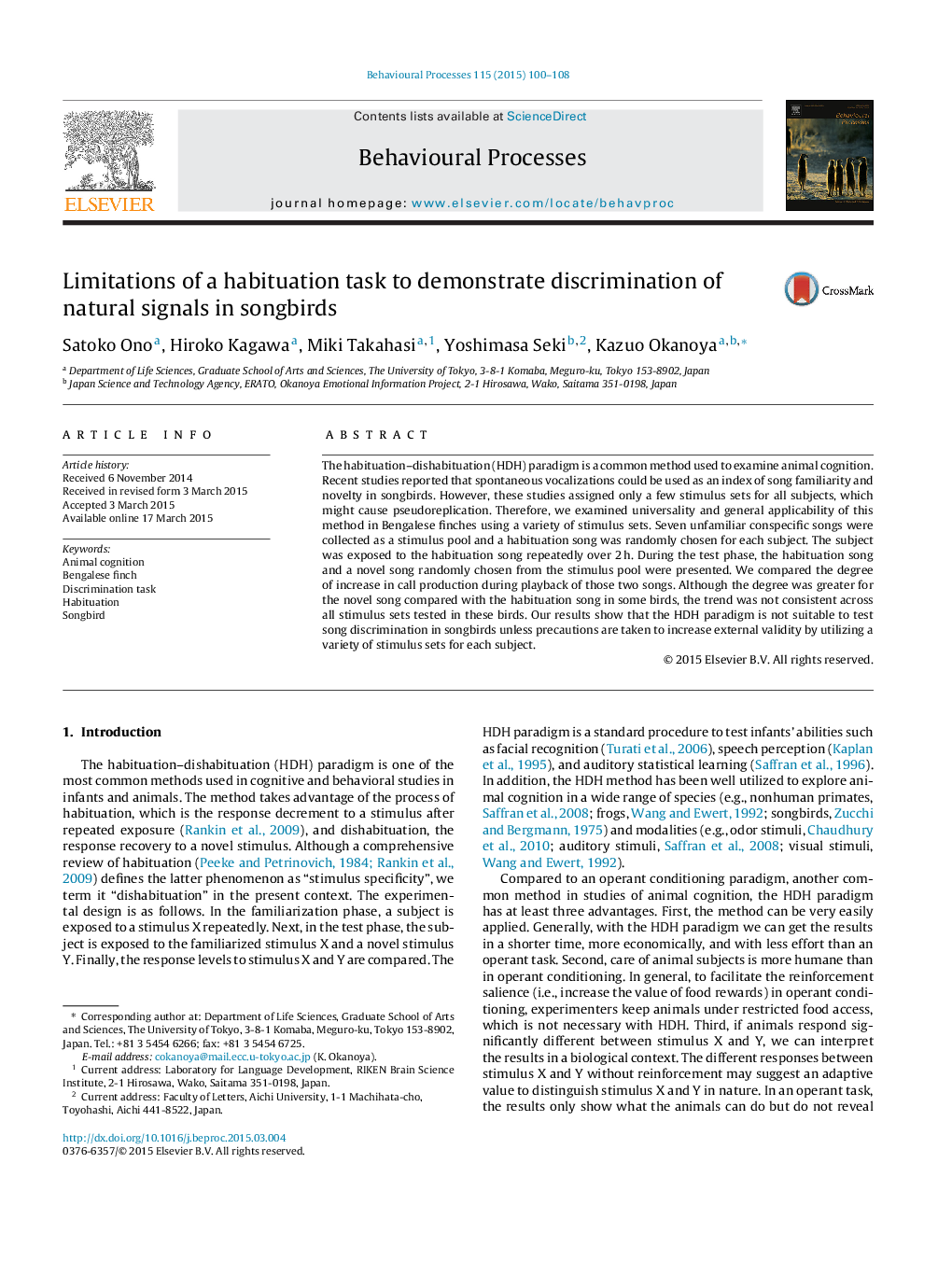| Article ID | Journal | Published Year | Pages | File Type |
|---|---|---|---|---|
| 2426597 | Behavioural Processes | 2015 | 9 Pages |
•We tested the habituation–dishabituation method in songbirds using various stimuli.•We used the number of calls produced as an index of habituation–dishabituation.•Not all birds increased their calls to novel songs compared with familiar songs.•Degree of dishabituation was affected by stimulus- and subject-specific factors.•We conclude that habituation–dishabituation cannot be generalized to all stimuli.
The habituation–dishabituation (HDH) paradigm is a common method used to examine animal cognition. Recent studies reported that spontaneous vocalizations could be used as an index of song familiarity and novelty in songbirds. However, these studies assigned only a few stimulus sets for all subjects, which might cause pseudoreplication. Therefore, we examined universality and general applicability of this method in Bengalese finches using a variety of stimulus sets. Seven unfamiliar conspecific songs were collected as a stimulus pool and a habituation song was randomly chosen for each subject. The subject was exposed to the habituation song repeatedly over 2 h. During the test phase, the habituation song and a novel song randomly chosen from the stimulus pool were presented. We compared the degree of increase in call production during playback of those two songs. Although the degree was greater for the novel song compared with the habituation song in some birds, the trend was not consistent across all stimulus sets tested in these birds. Our results show that the HDH paradigm is not suitable to test song discrimination in songbirds unless precautions are taken to increase external validity by utilizing a variety of stimulus sets for each subject.
